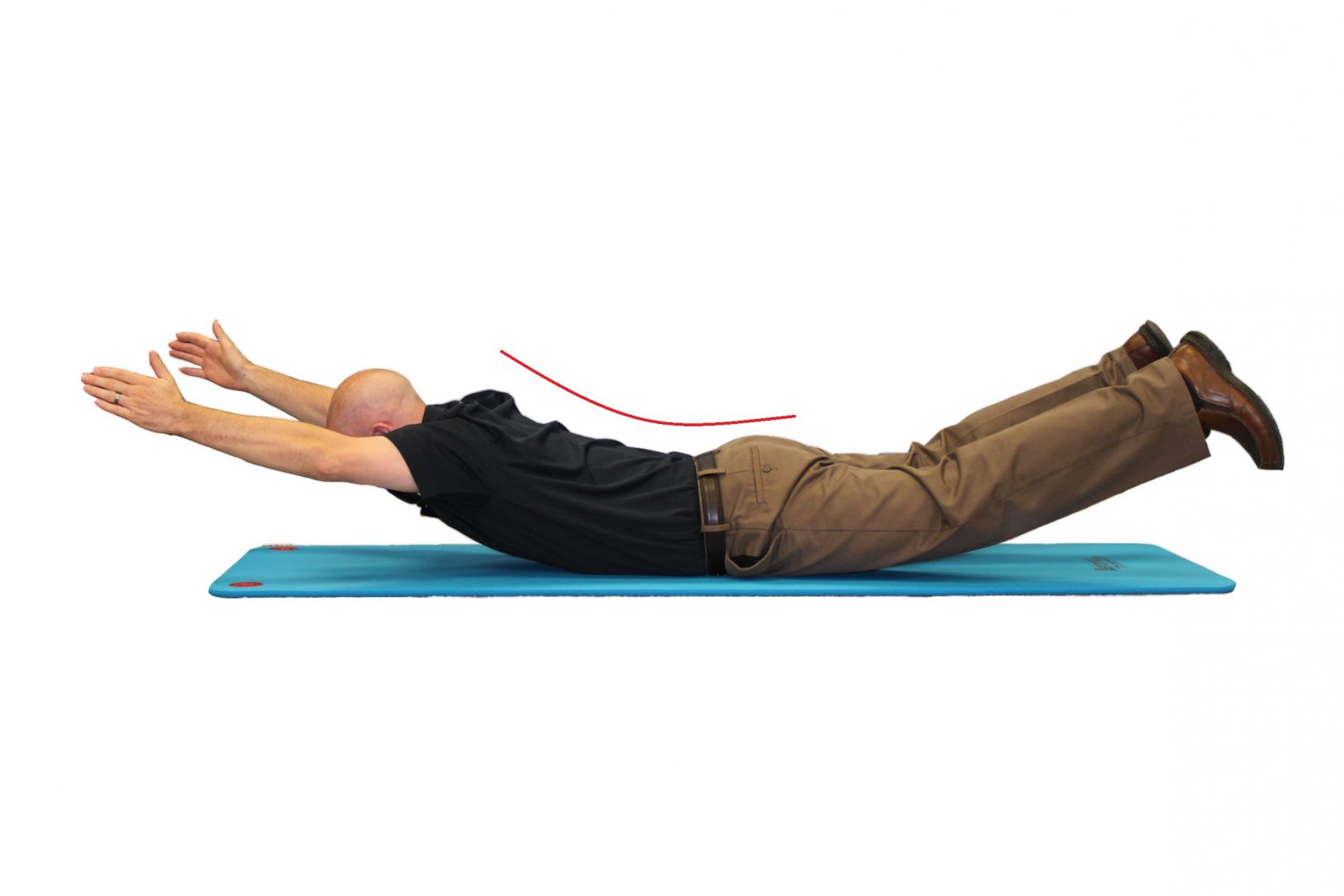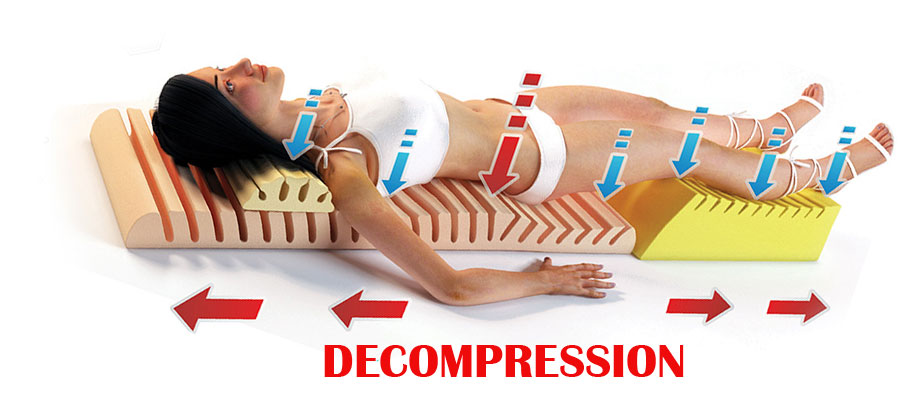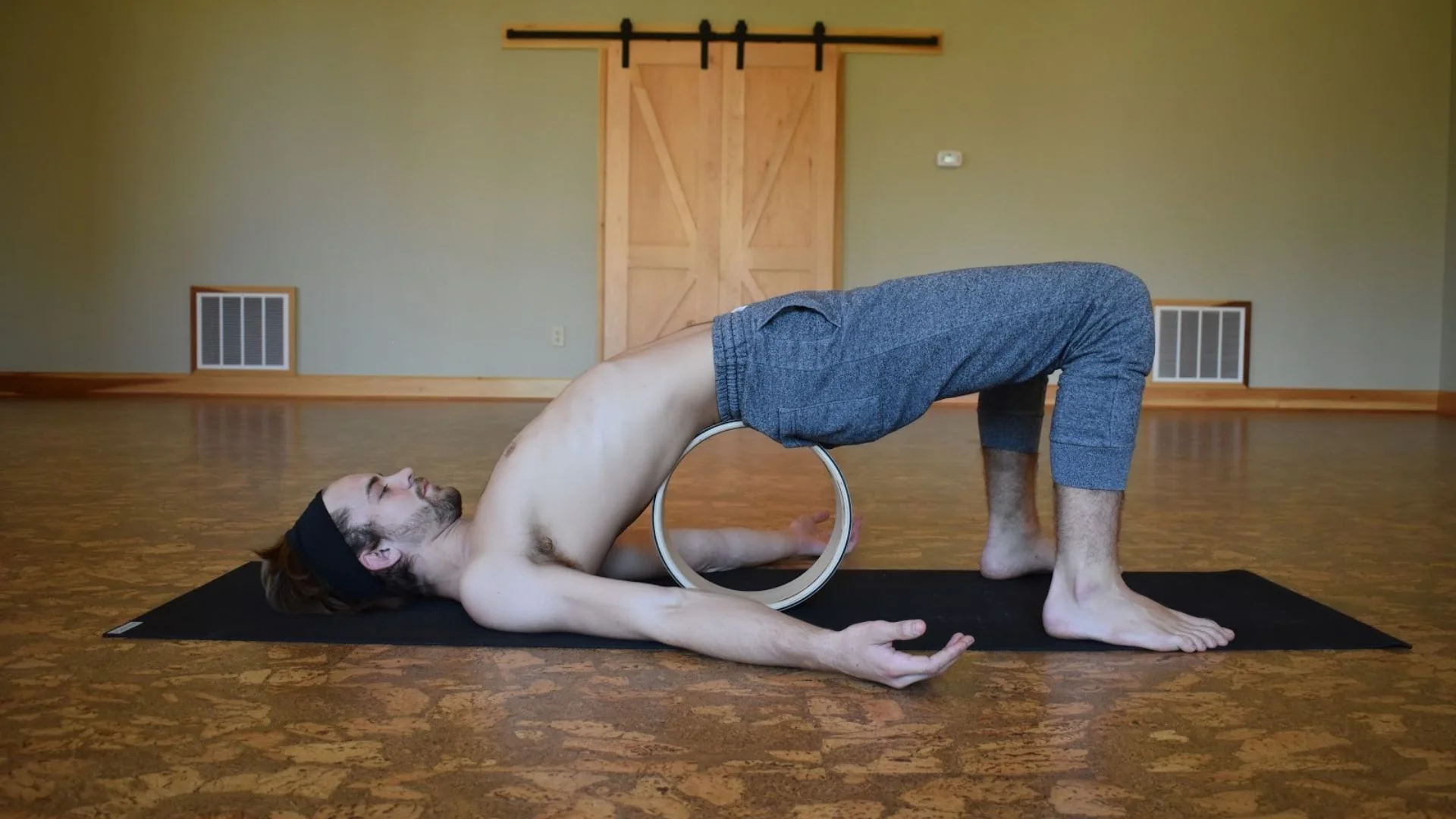Table of Contents
Exercise Daily – Back pain affects millions of people worldwide and can significantly impact your quality of life. However, there is hope. Incorporating spine decompression exercises into your routine can provide much-needed relief and help you regain control over your daily activities. Let’s see the seven effective spine decompression exercises that can alleviate back pain and improve your overall well-being.
Spine decompression exercises are especially beneficial for athletes who participate in high-impact sports. These sports can put a lot of stress on the spine, so spine decompression exercises can help to prevent injuries and improve performance.
Spine decompression exercises can help to improve overall health. They can help to reduce pain, improve posture, and boost circulation. This can lead to a number of health benefits, including improved sleep, reduced stress, and increased energy levels. Dealing with back pain can be a frustrating experience. However, before we dive into the spine decompression exercises, let’s first understand what spine decompression is and how it can benefit you.
Spine Decompression
Spine decompression is a therapeutic technique that aims to relieve pressure on the spinal discs, nerves, and joints. It involves creating space between the vertebrae, allowing nutrients to flow into the discs and reducing compression on the nerves. This process helps alleviate back pain and promotes healing.
Spine decompression exercises can help to prevent sports injuries. For example, they can help to strengthen the muscles that support the spine and improve flexibility. This can help to reduce the risk of injuries such as muscle strains, ligament sprains, and disc herniations.
Spine decompression exercises can be a part of a comprehensive fitness routine. They can help to improve flexibility, strength, and range of motion. This can help athletes and other active people to perform at their best.
Many gyms offer spine decompression exercises as part of their fitness programs. This is a great way for athletes and other active people to get the benefits of spine decompression without having to go to a specialized clinic.

7 Spine Decompression Exercises
1. Cat-Camel Stretch
The Cat-Camel Stretch is an excellent exercise for decompressing the spine. Start on your hands and knees, ensuring your back is parallel to the ground. Inhale as you arch your back upward, resembling a cat. Hold this position for a few seconds, then exhale as you lower your back down, resembling a camel. Repeat this stretch for 10 to 15 repetitions, focusing on the fluid movement of your spine.
2. Child’s Pose
Child’s Pose is a relaxing and effective exercise for decompressing the spine. Begin by kneeling on the floor, then slowly lower your buttocks towards your heels while extending your arms forward. Rest your forehead on the ground and hold this position for 30 seconds to one minute. Allow your spine to lengthen and your back muscles to relax during this gentle stretch.
3. Supine Knee-to-Chest Stretch
The Supine Knee-to-Chest Stretch helps relieve tension in the lower back and stretches the muscles along the spine. Lie on your back with your legs extended. Slowly bring one knee towards your chest and hold it with your hands for 20 to 30 seconds. Repeat the stretch with the other leg. Perform this exercise two to three times on each side.
4. Seated Forward Bend
Seated Forward Bend is a seated posture that stretches the entire back, decompressing the spine in the process. Sit on the floor with your legs extended in front of you. Inhale deeply, then exhale as you fold forward from the hips, reaching for your toes. If possible, hold onto your feet or ankles. Relax your head, neck, and shoulders as you hold this position for 30 to 60 seconds.
5. Sphinx Pose
The Sphinx Pose is a gentle backbend that targets the lower back and helps decompress the spine. Lie face down with your forearms on the ground, elbows aligned with your shoulders. Press your forearms into the floor, lifting your upper body while keeping your pelvis grounded. Hold this position for 30 seconds to one minute, focusing on lengthening your spine and opening up your chest.
6. Bridge Pose
The Bridge Pose is an effective exercise for decompressing the spine and strengthening the lower back muscles. Lie on your back with your knees bent and feet flat on the ground. Slowly lift your hips off the ground, pressing through your feet and engaging your glutes. Hold this position for 20 to 30 seconds, then gently lower your hips back down. Repeat this exercise for a total of 10 repetitions.
7. Hanging or Inversion Therapy
Hanging or inversion therapy involves hanging upside down or at an inverted angle to decompress the spine. This exercise helps to elongate the spine, relieve pressure on the discs, and improve spinal alignment. It’s important to note that hanging or inversion therapy should be done under the guidance of a qualified professional to ensure safety and effectiveness.

9 Ways to Protect Your Spine from Sports Injuries
Sports injuries can have a detrimental impact on your spine, causing pain, discomfort, and sometimes even long-term damage. However, by implementing the following strategies, you can minimize the risk of spinal injuries and enjoy your sports activities safely.
1. Warm Up and Stretch
Before engaging in any sports or physical activity, it’s crucial to warm up your body and perform stretching exercises. Warming up helps increase blood flow to the muscles, making them more flexible and less prone to injuries. Incorporate dynamic movements, such as jogging or jumping jacks, to get your heart rate up. Additionally, focus on stretching exercises that target your back, neck, and core muscles. This will enhance your overall flexibility and prepare your spine for the demands of the sport.
2. Proper Technique and Form
One of the most effective ways to protect your spine during sports is by ensuring proper technique and form. Improper movement patterns and techniques can put excessive strain on your spine and increase the risk of injury. It is advisable to consult with a qualified coach, trainer, or instructor who can guide you in mastering the correct form for your chosen sport. By understanding and implementing the right techniques, you can significantly reduce the stress on your spine and lower the chances of sustaining an injury.
3. Gradual Progression and Training
When engaging in sports or physical activities, it’s essential to progress gradually and avoid pushing your body beyond its limits. Overexertion and sudden intense training can lead to spine-related injuries. Start with a moderate intensity level and gradually increase the duration, frequency, or intensity of your workouts over time. Allow your body to adapt and strengthen before taking on more challenging exercises. By following a progressive training approach, you can protect your spine and reduce the risk of overuse or acute injuries.

4. Use Protective Gear
Protective gear is a vital component of injury prevention, especially in high-impact sports. Wearing appropriate equipment significantly reduces the risk of spinal injuries. Depending on your chosen sport, consider using helmets, mouthguards, shoulder pads, knee pads, or any other protective gear that is recommended. These gears provide added support, cushioning, and stability to your spine, minimizing the impact of falls, collisions, or sudden movements.
5. Cross-Train and Strengthen Supporting Muscles
Engaging in a variety of physical activities and cross-training can help strengthen the supporting muscles around your spine. A well-rounded exercise routine that includes cardiovascular exercises, strength training, and flexibility exercises can enhance the stability and resilience of your spine. Focus on exercises that target the core muscles, back muscles, and hip muscles. By strengthening these muscle groups, you provide better support and protection for your spine during sports activities.
6. Listen to Your Body
Your body provides important signals that should not be ignored. If you experience pain, discomfort, or any unusual sensations during or after sports activities, it’s crucial to listen to your body and seek appropriate medical attention if needed. Ignoring these warning signs can lead to further damage and exacerbate existing injuries. Pay attention to any changes in your spine’s functionality and consult a healthcare professional to address the issue promptly.
7. Maintain a Balanced and Healthy Diet
Nutrition plays a significant role in maintaining the health of your spine. A balanced and healthy diet ensures that your bones, muscles, and connective tissues receive the necessary nutrients for optimal functioning and injury prevention. Include foods rich in calcium, vitamin D, and magnesium to support bone strength. Incorporate lean proteins, fruits, vegetables, and whole grains to provide essential vitamins and minerals for overall musculoskeletal health. By fueling your body with proper nutrition, you promote the strength and resilience of your spine, reducing the risk of injuries during sports activities.
8. Stay Hydrated
Hydration is vital for maintaining the elasticity and shock-absorbing properties of your spinal discs. Dehydration can lead to decreased disc height and increased susceptibility to injuries. Make sure to drink an adequate amount of water before, during, and after sports activities to keep your spinal discs hydrated. Depending on the intensity and duration of your exercise, you may need to replenish electrolytes as well. Proper hydration supports the overall health and flexibility of your spine, reducing the risk of injuries caused by disc degeneration or herniation.
9. Get Sufficient Rest and Recovery
Rest and recovery are crucial aspects of injury prevention. Engaging in intense sports activities without allowing your body enough time to rest and recover can increase the risk of spinal injuries. Make sure to incorporate rest days into your training schedule and listen to your body’s signals for fatigue or overexertion. During rest periods, your body repairs and rebuilds tissues, including those in your spine. Additionally, quality sleep is essential for proper tissue healing and overall musculoskeletal health. Aim for seven to nine hours of sleep each night to support the recovery process and reduce the risk of sports-related spinal injuries.

Benefits of Spine Decompression Exercises
Living with chronic back pain can significantly impact your daily life and restrict your activities. Spine decompression exercises offer a non-invasive and drug-free approach to alleviate pain and improve your spine’s health. By stretching and elongating the spine, these exercises relieve pressure, promote spinal alignment, and provide a range of other benefits.
Spine decompression exercises involve gentle stretching and traction techniques that aim to create space between the spinal vertebrae. By doing so, these exercises help relieve pressure on the spinal discs, nerves, and surrounding tissues. They can be performed using various methods, including inversion tables, yoga poses, and specialized equipment.
1. Relieving Back Pain
One of the primary benefits of spine decompression exercises is their ability to relieve back pain. By decompressing the spine, these exercises alleviate pressure on compressed nerves and reduce muscle tension. This can provide immediate relief and contribute to long-term pain management.
2. Improving Spinal Alignment
Regular practice of spine decompression exercises helps improve spinal alignment. Misalignment of the spine can lead to various issues, such as poor posture, muscle imbalances, and an increased risk of injuries. By elongating the spine and promoting proper alignment, these exercises help restore balance and optimize the functioning of the musculoskeletal system.
3. Enhancing Flexibility and Range of Motion
Spine decompression exercises also enhance flexibility and increase the range of motion in the spine. As the exercises stretch the spine, they promote the elongation of muscles and ligaments surrounding the vertebrae. This improved flexibility can make daily movements easier, reduce stiffness, and enhance overall physical performance.
4. Strengthening Core Muscles
Many spine decompression exercises engage the core muscles, which play a vital role in supporting the spine. By strengthening the core muscles, these exercises provide better stability and protection for the spinal column. A strong core helps prevent injuries, reduces strain on the back, and improves posture.
5. Promoting Spinal Disc Health
Spinal discs act as cushions between the vertebrae, providing shock absorption and flexibility. Spine decompression exercises promote the health of these discs by increasing nutrient-rich fluids’ circulation within them. This helps nourish the discs, improve their elasticity, and reduce the risk of degenerative disc diseases.
6. Boosting Circulation and Nutrient Delivery
When performing spine decompression exercises, the stretching and elongation of the spine enhance blood circulation. Improved circulation ensures that oxygen and nutrients reach the spinal tissues more efficiently. This boost in circulation promotes healing, reduces inflammation, and contributes to overall spinal health.
7. Correcting Posture Issues
Sedentary lifestyles, poor posture habits, and prolonged sitting can lead to postural issues, such as rounded shoulders and forward head posture. Spine decompression exercises can help correct these problems by stretching and aligning the spine properly. By incorporating these exercises into your routine, you can improve your posture and reduce the strain on your spine.
8. Reducing the Risk of Future Injuries
Regular practice of spine decompression exercises strengthens the supporting muscles and ligaments around the spine, making it more resilient to injuries. By improving the spine’s overall health and stability, these exercises reduce the risk of future back problems and related conditions.
9. Enhancing Overall Well-being
Beyond alleviating pain and improving spinal health, spine decompression exercises contribute to overall well-being. The release of endorphins during exercise helps elevate mood and reduce stress levels. Additionally, by increasing mobility and reducing discomfort, these exercises enhance your quality of life, allowing you to engage in activities that bring you joy.
10. Incorporating Spine Decompression Exercises Into Your Routine
To reap the benefits of spine decompression exercises, it’s important to incorporate them into your regular routine. Start with gentle exercises and gradually increase the intensity and duration as your body adapts. Consult with a healthcare professional or a qualified trainer to ensure you perform the exercises correctly and safely.
11. Safety Precautions
While spine decompression exercises are generally safe, it’s essential to practice them with caution. If you have any pre-existing medical conditions, such as herniated discs or osteoporosis, consult your healthcare provider before starting a decompression exercise routine. Additionally, always listen to your body, avoid overexertion, and stop any exercise that causes excessive pain or discomfort.

How to Decompress Your Spine with Yoga
Spinal compression refers to the pressure and tightness experienced in the spinal column. It can result from poor posture, physical inactivity, repetitive movements, or the natural aging process. When the spine is compressed, it can cause discomfort, pain, and restricted mobility. However, regular yoga practice can help counteract these effects and restore the natural alignment of the spine.
Benefits of Spinal Decompression
Decompressing your spine through yoga offers numerous benefits. Here are some of the key advantages:
- Relieves Back Pain: Yoga poses designed for spinal decompression help relieve back pain by stretching and elongating the spine, releasing tension and pressure.
- Improves Flexibility: Practicing yoga regularly improves overall flexibility, which can reduce stiffness and promote better spinal health.
- Enhances Posture: Yoga helps strengthen the muscles that support proper posture, promoting better alignment and reducing the risk of spinal compression.
- Increases Circulation: Yoga poses improve blood flow to the spinal discs and muscles, nourishing them with oxygen and nutrients, thus promoting healing and reducing inflammation.
- Promotes Relaxation: Yoga incorporates breathing techniques and mindfulness, reducing stress levels and promoting relaxation throughout the body, including the spine.
Yoga Poses for Spinal Decompression
Now, let’s explore some effective yoga poses that can help decompress your spine and provide relief.
1. Cat-Cow Pose (Marjaryasana-Bitilasana)
The Cat-Cow pose gently massages the spine and stretches the back muscles. Start on all fours with your hands under your shoulders and knees under your hips. Inhale, arch your back, lift your tailbone, and gaze upward (Cow pose). Exhale, round your spine, tuck your chin to your chest, and draw your belly in (Cat pose). Repeat this sequence for several breaths.
2. Downward-Facing Dog Pose (Adho Mukha Svanasana)
The Downward-Facing Dog pose elongates the spine and stretches the entire back of the body. Begin on your hands and knees, tuck your toes under, and lift your hips upward, forming an inverted V-shape with your body. Press your palms into the mat and lengthen your spine. Hold this pose for a few breaths, feeling the stretch along your spine.
3. Child’s Pose (Balasana)
Child’s Pose is a gentle resting pose that stretches the lower back and promotes relaxation. Kneel on the floor, sit back on your heels, and slowly lower your torso forward, bringing your forehead to rest on the mat. Extend your arms forward or alongside your body. Breathe deeply and allow your spine to lengthen and release.
4. Extended Triangle Pose (Trikonasana)
The Extended Triangle pose stretches the spine, hamstrings, and hips, promoting spinal flexibility. Stand with your feet wide apart, extend your arms parallel to the floor, and reach your right hand forward. Tilt your torso to the right, keeping your legs straight. Place your right hand on your shin, ankle, or the floor and extend your left arm upward. Hold for a few breaths, then switch sides.
5. Bridge Pose (Setu Bandhasana)
The Bridge pose strengthens the back muscles, opens the chest, and stretches the spine. Lie on your back with your knees bent and feet flat on the floor. Press your feet and palms into the ground, lift your hips, and interlace your fingers under your body. Lengthen your tailbone toward your knees and draw your shoulder blades together. Hold for several breaths before slowly releasing.
6. Legs Up the Wall Pose (Viparita Karani)
Legs Up the Wall pose is a restorative posture that allows gravity to gently decompress the spine. Sit sideways next to a wall and swing your legs up against the wall as you lie back on the floor. Relax your arms by your sides and breathe deeply, feeling the gentle stretch and release in your spine.
7. Supported Fish Pose (Matsyasana)
The Supported Fish pose opens the chest, stretches the front of the body, and counteracts the effects of hunching forward. Place a bolster or a folded blanket lengthwise on your mat. Sit with your knees bent, feet on the floor, and the bolster positioned behind you. Slowly lie back onto the bolster, allowing your head and upper back to gently arch backward. Rest your arms by your sides or overhead. Stay in this pose for a few breaths.
8. Sphinx Pose (Salamba Bhujangasana)
The Sphinx pose strengthens the spine and stimulates the abdominal organs. Lie on your belly, place your forearms on the mat with your elbows under your shoulders, and press your palms into the ground. Lift your upper body, drawing your chest forward and up. Keep your pubic bone and legs pressing firmly into the mat. Breathe deeply as you hold the pose.
9. Seated Forward Bend (Paschimottanasana)
The Seated Forward Bend pose stretches the entire back of the body, including the spine and hamstrings. Sit on the mat with your legs extended in front of you. Inhale, lengthen your spine, and exhale as you fold forward from the hips. Reach for your feet or ankles with your hands. Relax your neck and shoulders and hold the pose while breathing deeply.
10. Supine Spinal Twist (Supta Matsyendrasana)
The Supine Spinal Twist gently stretches the spine, hips, and shoulders while improving spinal mobility. Lie on your back, bend your knees, and let them fall to one side. Extend your arms out to the sides, palms facing up. Keep both shoulders grounded as you gaze in the opposite direction of your knees. Breathe deeply and hold the twist before switching sides.
11. Corpse Pose (Savasana)
Corpse Pose is a final relaxation pose that allows your body to integrate the benefits of the previous poses. Lie flat on your back, legs slightly apart, and arms relaxed by your sides. Close your eyes and consciously release tension from your body. Stay in this pose for several minutes, focusing on deep, slow breaths.

Incorporating Yoga into Your Daily Routine
To experience the maximum benefits of spinal decompression through yoga, consider incorporating the following tips into your daily routine:
- Consistency: Practice yoga regularly to maintain the benefits and gradually improve your spinal health.
- Start Slow: If you’re new to yoga or have specific back conditions, start with gentle poses and gradually progress to more advanced postures.
- Listen to Your Body: Pay attention to how your body feels during each pose. Modify or skip any pose that causes pain or discomfort.
- Warm-Up: Before diving into the yoga sequence, warm up your body with a few gentle stretches or a short walk.
- Combine with Other Exercises: Incorporate other forms of exercise, such as walking, swimming, or strength training, to support overall spinal health.
Precautions and Tips for Spinal Decompression Yoga
While yoga can be beneficial for spinal decompression, it’s essential to keep the following precautions and tips in mind:
- Consult a Professional: If you have a pre-existing back condition or injury, consult with a healthcare professional or a qualified yoga instructor before starting any new exercise routine.
- Modify as Needed: Adapt the poses to suit your body’s limitations. Use props, such as blocks or bolsters, for support and to prevent strain.
- Warm-Up and Cool Down: Always warm up before yoga practice and include a cool-down period to relax your muscles and bring your heart rate back to normal.
- Stay Hydrated: Drink plenty of water before, during, and after your yoga practice to keep your body hydrated and support overall well-being.
- Listen to Your Body: Honor your body’s limitations and never push yourself beyond what feels comfortable. If a pose causes pain, back off or try a modified version.

Conclusion
Incorporating spine decompression exercises into your routine can be a game-changer when it comes to managing back pain. The seven exercises mentioned in this article provide an effective and natural way to relieve pressure on the spine, alleviate discomfort, and promote overall spinal health. Remember to consult with a healthcare professional before starting any new exercise regimen, especially if you have pre-existing back conditions.
FAQs – 7 Effective Spine Decompression Exercises
1. How often should I perform these spine decompression exercises?
It’s recommended to perform these exercises two to three times a week for optimal results. However, listen to your body and adjust the frequency based on your comfort level.
2. Can I do these exercises if I have a history of back surgery?
If you have a history of back surgery, it’s crucial to consult with your healthcare provider before attempting any new exercises. They can provide personalized guidance based on your specific situation.
3. Are there any precautions I should take while performing these exercises?
Yes, it’s essential to maintain proper form and avoid overexertion. If you experience severe pain or discomfort during any exercise, stop immediately and consult with a healthcare professional.
4. Can these exercises completely cure my back pain?
While these exercises can provide relief and help manage back pain, it’s important to understand that individual results may vary. Back pain can have various underlying causes, and a comprehensive approach involving lifestyle changes, ergonomic adjustments, and professional guidance may be necessary.
5. Are there any alternative therapies for spine decompression?
Yes, in addition to exercises, alternative therapies such as chiropractic adjustments, acupuncture, and physical therapy may also help with spinal decompression. Consult with a healthcare professional to explore the best options for your specific needs.





